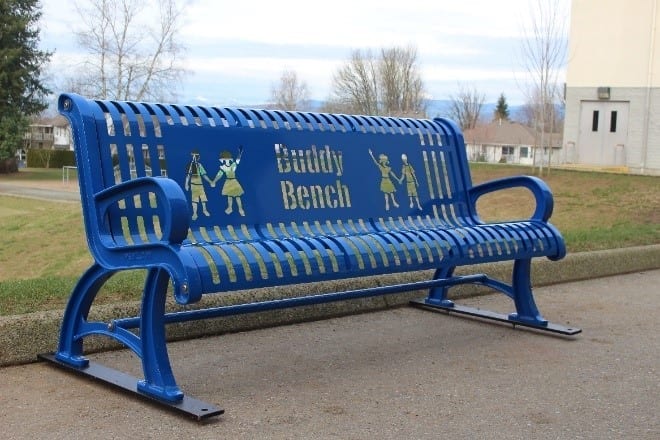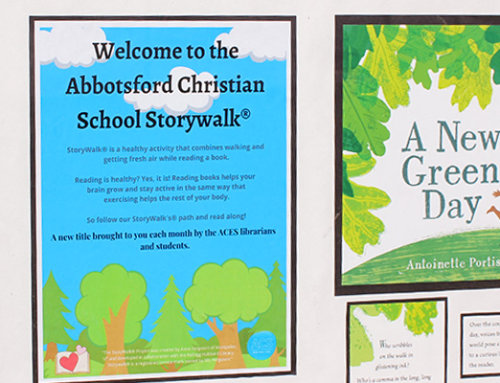DRIVING QUESTION:
How will we teach the children at our school about using the BUDDY BENCH on the playground?
Project Overview:
In this project, students of a multi-age (grade 2 and 3) class will work collaboratively to solve a real-world problem. They will create a way for students who are lonely on the playground to find someone to play with. The students will introduce and implement of the BUDDY BENCH Protocol for elementary school students to use at recess times.
A BUDDY BENCH is a place on the playground for students to make connections with peers and to have a spot to make a new friend or play with a different group of children. A BUDDY BENCH fosters kindness, friendship, and empathy in our school community. It gives children on the playground a visual signal of another child’s need. The BUDDY BENCH on the playground stands as a clear symbol that the teachers, staff, and student body at the school truly value social inclusion, and don’t want anybody to be left out or feeling lonely.
The students from our multi-age grade 2 and 3 class, worked collaboratively to create and share a presentation about the BUDDY BENCH for the students at our school. The class planned, organized and presented all the parts of the chapel assembly.
They also chose a spot on the playground for the BUDDY BENCH to be installed and continued to monitor it once it was put in place. We also plan to install a BUDDY BENCH at another school in our community and teach them ways to use it.
“It was amazing to see the ownership the students took over their work as well as of the BUDDY BENCH on the playground.
A highlight was watching my students interview, via Skype, a principal at a school in Langley who had a Buddy Bench at his school. I loved giving the students voice and choice by letting the students choose what part of the chapel presentation they wanted to plan and execute. It was tricky to give each group the work time, space, and tools they needed.
I am so glad we (my partner teacher and I) had been intentional about practicing Project Based Learning (PBL) elements in isolation throughout the school year so that students understood many of the practices when it was time to work through a project. I was reminded that everything in a project requires more time than you think it will.
Next time, I would provide students with more tools to learn about Buddy Bench protocols as well as spend more time on the social-emotional/friendship aspects of relationship building. Once the BUDDY BENCH was in use students saw so many things on the playground they wanted to address and change but we didn’t have time left in the school year to do anything about it.
I wish that I had intentionally planned this as a 2-part project and started earlier in the school year. We would have done the initial introduction and chapel at the beginning of the school year and then monitored the Buddy Bench and its use for several months. Then, mid-year started the second part where we did some re-teaching to our student body and an iteration of our original presentation to another school, adding the information that we had learned from our initial implementation to the presentation.”
Product/Presentation:
- Presentation of BUDDY BENCH protocol at an all-school assembly
- Installation of a BUDDY BENCH at our school
- Installation of a BUDDY BENCH at another school
How has this engaged students in ACS’ mission and vision?
Engaging Minds: Students worked collaboratively on developing a chapel presentation; various groups planned aspects of the chapel (created the visual presentation, lead the worship, and prepared the information in an engaging way).
Nurturing Hearts: We explored topics such as loneliness, kindness, bullying and friendship. We developed empathy and learned about peer-initiated inclusion.
Shaping God’s World: The students in the class were an integral part of the installation of the BUDDY BENCH on our school playground that will be used by elementary students for many years to come. Students practiced being community-servers (build shalom and heal brokenness as citizens of our community) and justice-promoters (act as agents of change by identifying and responding to injustices).
How has this learning experience served or connected to our community?
This project has been extended over two school years. During the first year, the BUDDY BENCH was implemented at our own playground. The following year, the students in the class (because it is a multi-age class, half of the students are involved in the project for two years) will present a BUDDY BENCH to a school in our community. giving us an opportunity to share our learning beyond the wall of our campus.
“The ownership that the students from our class had over the Buddy Bench on our playground was fantastic. The students involved in the Buddy Bench Project became much more aware of playground dynamics and I saw significant improvement of their awareness of social-emotional dynamics. Knowing that they were going to present important information to the student body at a chapel boosted their work habits and effort.”
SAMPLE PROJECT FILES:
Please do not reproduce without prior permission. To make this request, please email us.
How to Use the Buddy Bench Poster
I’m So Lonely at Recess Poster
Buddy Bench Student Video
Animal Friends Student Video











Leave A Comment